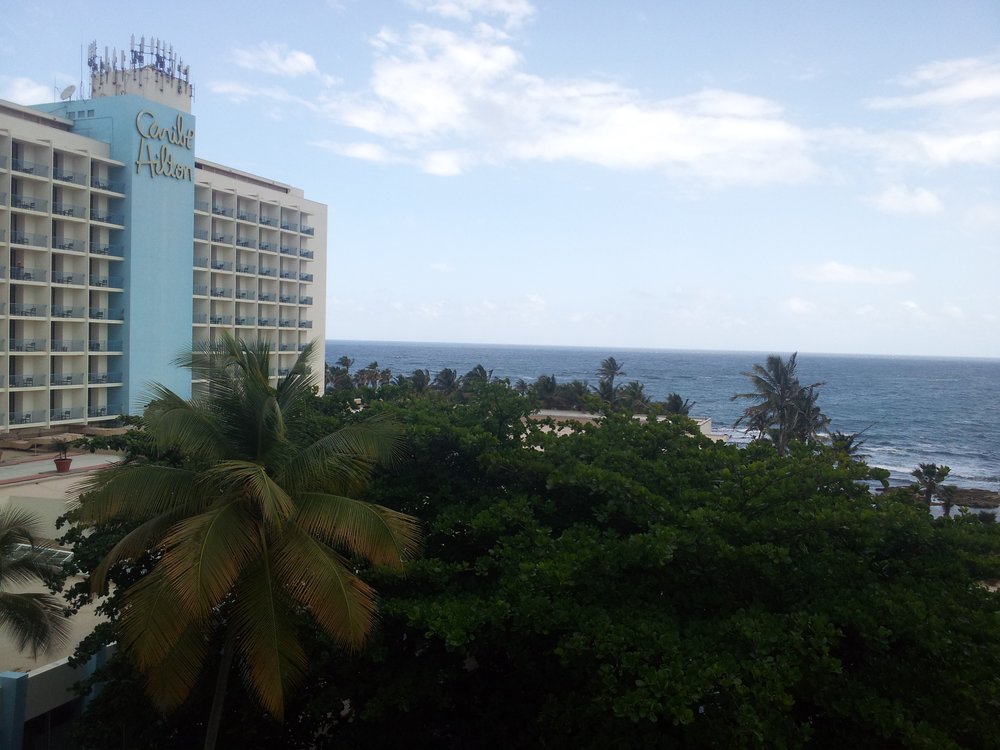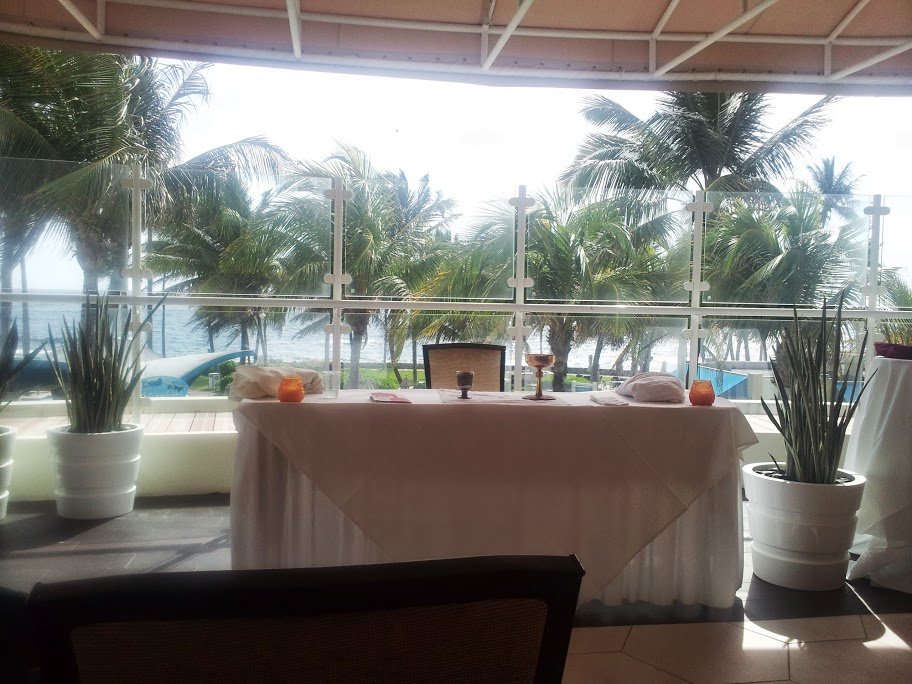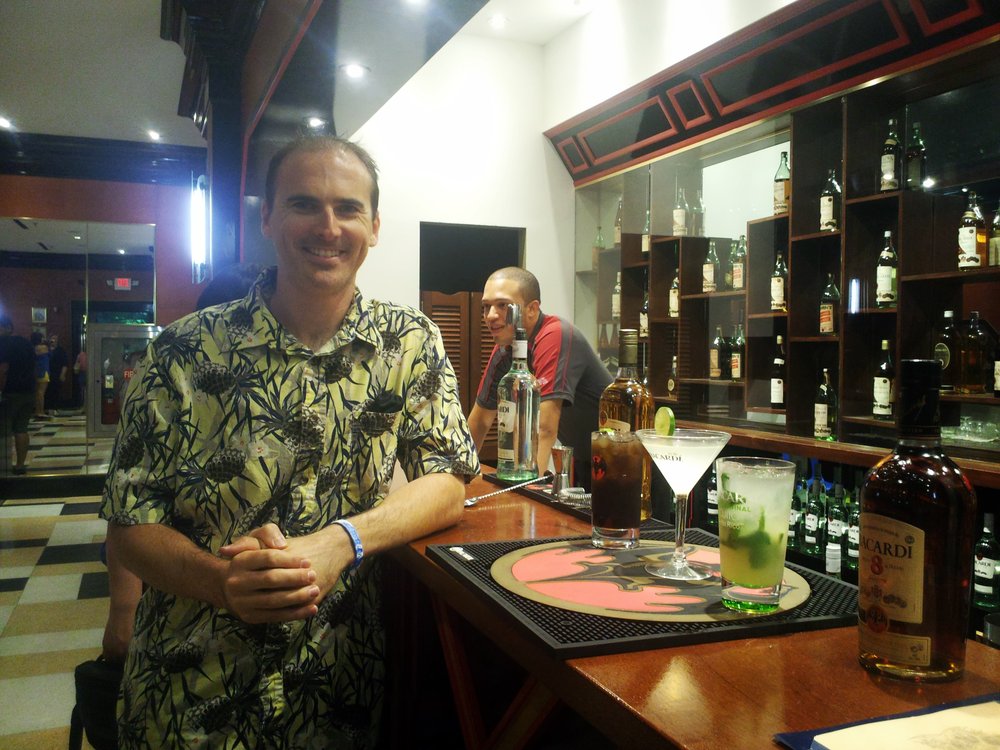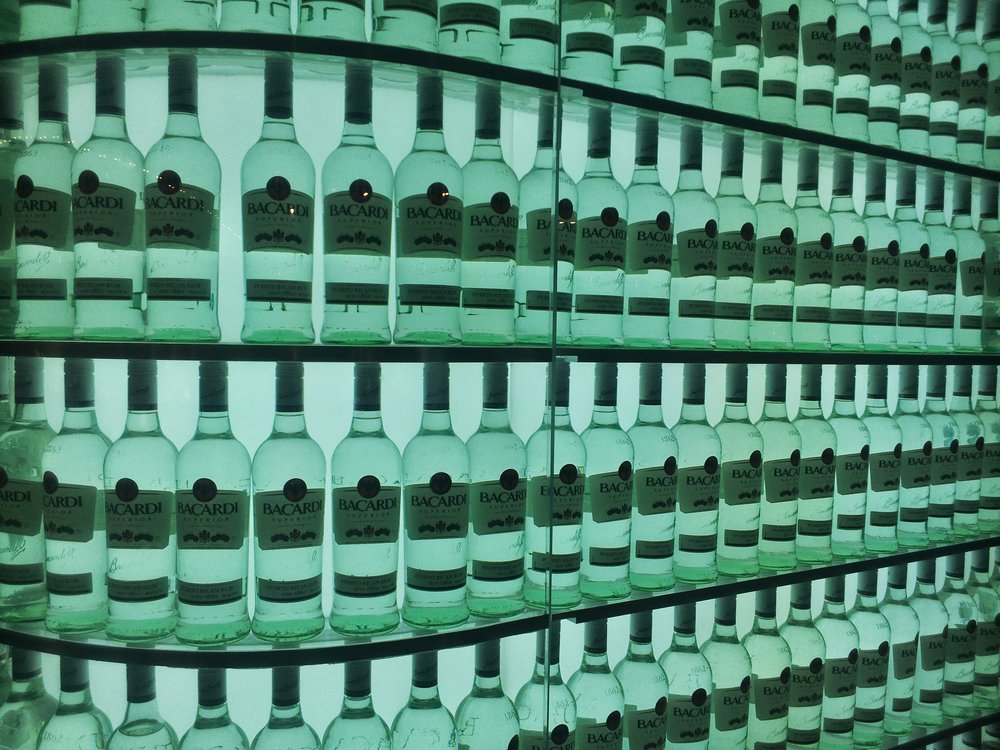Last week, I visited San Juan, Puerto Rico for an industry conference. The conference went well, and my time on the tiny island left me with a few…observations.
 Puerto Rico From My Hotel RoomPuerto Rico was one of the spoils of the Spanish-American war. After the U.S. defeated Spain in the ten week skirmish, it annexed Guam, Puerto Rico, and the Philippines, assuming indefinite colonial authority over the three islands. In 1952, Puerto Rico adopted its own constitution. All of that historical legal context boils down to this: Puerto Rico is a rather interesting if not confused place. Let me elaborate.
Puerto Rico From My Hotel RoomPuerto Rico was one of the spoils of the Spanish-American war. After the U.S. defeated Spain in the ten week skirmish, it annexed Guam, Puerto Rico, and the Philippines, assuming indefinite colonial authority over the three islands. In 1952, Puerto Rico adopted its own constitution. All of that historical legal context boils down to this: Puerto Rico is a rather interesting if not confused place. Let me elaborate.
Puerto Ricans have U.S. citizenship but don’t pay any federal taxes. They can’t vote in U.S. elections but they can serve in the military. The U.S. constitution has full effect here, but Puerto Rico is not a state. There are national parks, patrolled by U.S. Park Rangers, and the TSA screens you and your baggage at the airport (the FDA has also managed to get in on that action). Gas is sold in liters while speeds are enforced in miles per hour. Looking for your next exit on the freeway? That distance will be measured in kilometers. Confused yet? Perhaps I could get someone to explain it further in either English or Spanish. While the United States has no official language, Puerto Rico has two.
 Sunday Mass Had A Definite Island FlavorActually, I lied. Puerto Rico has three languages: English, Spanish, and peacock. The latter I discovered the hard way. It was 4 a.m. Monday morning. I was scheduled to give a talk in seven hours. No matter how well prepared I am, I always get a little burst of anxiety before a talk. Combine that with copious amounts of rum the night before and I didn't sleep all that well Sunday night. So when I heard what sounded like a small child crying for help from my seventh floor room, I bolted upright in bed. The first time I think I assumed it was a dream. I put my head back on the pillow. Just as I was drifting off I heard it again--Heeeeeeeeeeelllp! Heeeeeeeeeeelllp! "I'm up!" I shouted to no one in particular. This process was repeated about four times before I realized there were two peacocks perched out by the pond in front of my room's tower. They were trying to wake me up. They kept trying every morning, with great success.
Sunday Mass Had A Definite Island FlavorActually, I lied. Puerto Rico has three languages: English, Spanish, and peacock. The latter I discovered the hard way. It was 4 a.m. Monday morning. I was scheduled to give a talk in seven hours. No matter how well prepared I am, I always get a little burst of anxiety before a talk. Combine that with copious amounts of rum the night before and I didn't sleep all that well Sunday night. So when I heard what sounded like a small child crying for help from my seventh floor room, I bolted upright in bed. The first time I think I assumed it was a dream. I put my head back on the pillow. Just as I was drifting off I heard it again--Heeeeeeeeeeelllp! Heeeeeeeeeeelllp! "I'm up!" I shouted to no one in particular. This process was repeated about four times before I realized there were two peacocks perched out by the pond in front of my room's tower. They were trying to wake me up. They kept trying every morning, with great success.
 The Bah-Car-Dee VIP BarThe culture here is equally unique. Heading to dinner? Expect at least a two hour experience. Nobody will be in a hurry to seat you or serve you. You’ll definitely need to ask for the check when you’re finished. Getting to dinner, on the other hand, is a different story. Turn signals in Puerto Rico have been replaced by horns. Traffic is to be expected, but people drive as though the road is their race track. When I arrived at the airport this morning, my cab driver was so anxious to get back to the raceway he nearly drove off with my bag still in the back of his van. I found myself chasing a moving cab in the white zone. An airline flight crew happened to be walking by on the sidewalk and chuckled, the captain suggesting I should have tipped better. True story.
The Bah-Car-Dee VIP BarThe culture here is equally unique. Heading to dinner? Expect at least a two hour experience. Nobody will be in a hurry to seat you or serve you. You’ll definitely need to ask for the check when you’re finished. Getting to dinner, on the other hand, is a different story. Turn signals in Puerto Rico have been replaced by horns. Traffic is to be expected, but people drive as though the road is their race track. When I arrived at the airport this morning, my cab driver was so anxious to get back to the raceway he nearly drove off with my bag still in the back of his van. I found myself chasing a moving cab in the white zone. An airline flight crew happened to be walking by on the sidewalk and chuckled, the captain suggesting I should have tipped better. True story.
One thing Puerto Ricans are not confused about is plantains. Plantains were on just about every menu I read while on the island, with the possible exception of El Hamburger (though if I had inquired about a plantain burger, I’m sure they would have been happy to make it happen). My favorite dish, mostly because it was fun to say, was mofongo. Mofongo is made of mashed plantains that are fried and then filled with either meat, vegetables, or seafood. Imagine a sweet cornbread muffin topped with steak or shrimp, that’s kind of what mofongo tastes like. Of course, the taste is nothing compared to the amusement of sitting at a table full of engineers trading puns about filling your mofongo with pulpo (octopus). It was funny at the time. Maybe it was the rum.
Ah, the rum. The day after my very late arrival in Puerto Rico, I visited the Bacardi factory (here they pronounce it BAH – car – dee). 85% of Bacardi rum is produced on the island—over 100,000 gallons per day (the other 15% is produced in Mexico). According to the tour propaganda, Bacardi rum is the #1 best-selling premium spirit in the world. That’s ironic given my troubled history with rum. That’s all we’re going to say about that.
 A Few Of The 100,000 Gallons Produced On The IslandAs a fan of fermentation, the Bacardi tour was not the best distillery or brewery tour I’ve ever taken, but it was informative. For example, the bartender at the VIP bar on the tour (where we were not served any drinks) described the history of the Daiquirí. At a bar in Cuba, groups of miners used to come in to the bar after work for libation. An engineer among them, Jennings Cox, repeatedly instructed the bartender how to make his favorite refreshment: Bacardi rum mixed with sugar and lime. Eventually the bartender asked Cox where he worked. When Cox told him he and his men were working in the Daiquirí mines, the bartender gave the drink the same name.
A Few Of The 100,000 Gallons Produced On The IslandAs a fan of fermentation, the Bacardi tour was not the best distillery or brewery tour I’ve ever taken, but it was informative. For example, the bartender at the VIP bar on the tour (where we were not served any drinks) described the history of the Daiquirí. At a bar in Cuba, groups of miners used to come in to the bar after work for libation. An engineer among them, Jennings Cox, repeatedly instructed the bartender how to make his favorite refreshment: Bacardi rum mixed with sugar and lime. Eventually the bartender asked Cox where he worked. When Cox told him he and his men were working in the Daiquirí mines, the bartender gave the drink the same name.
While the tour did not visit any actual functional parts of the Bacardi distillery, it was free and did come with two complimentary cocktails. That was well worth the fifteen minute drive—even if I did take a note from the worst copilot ever and get my driver lost on the way home. I blame the rum.
